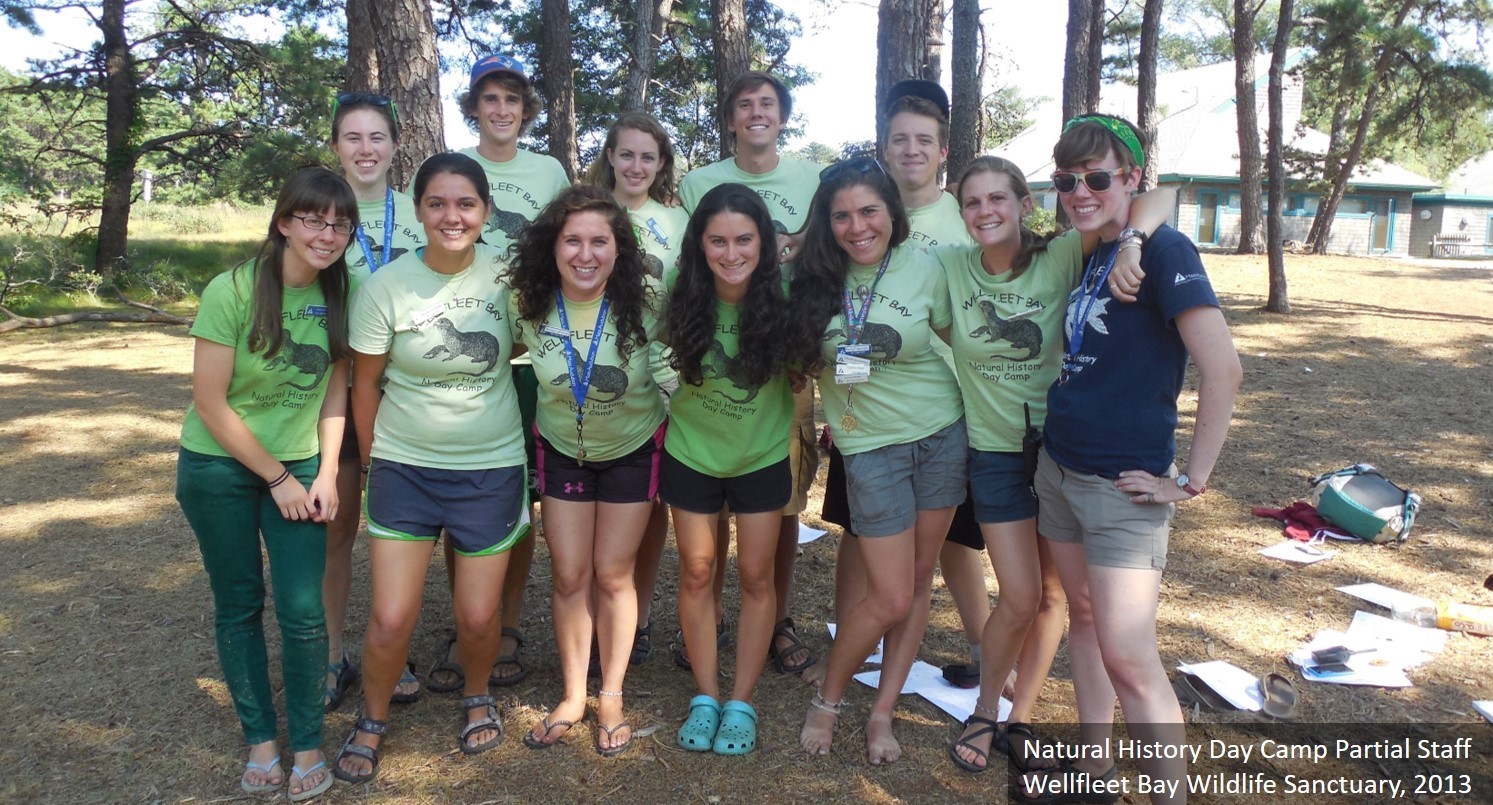Teaching & Outreach
The respect I provide to the students in my classroom extends to all students, no matter their gender identity, race, religious identity, age, physical ability, neurodiversity, socioeconomic status, or sexual orientation, as I believe all individuals are entitled to education, compassion, and a sense of belonging. Creating an equitable environment in my classroom is of utmost priority, since I wish for all my students to succeed, despite any barriers they may face. My own lived experiences as a queer woman in STEM have helped me pursue this goal from an institutional level down to daily interpersonal interactions.
Below are some selected teaching experiences, outreach events, and projects I have been a part of through the years. If you are interested in collaborating on an education-focused project, please feel free to contact me.
Girls Who Code
Starting in winter of 2022, my coworker Camille Ross and I started a new chapter of Girls Who Code at the Boothbay Harbor Memorial Library in Boothbay Harbor, Maine. Girls Who Code is an organization that focuses on teaching girls from elementary school through college that coding is for everyone, with the goal of closing the gender gap in computing. Our club consists of 5th - 8th graders, alongside some passionate high school volunteers. We focus on using Scratch, a free, online, block-based coding language, to explore how to problem solve, logic through code, and most importantly, create fun animations and games in the process.

Skype A Scientist
Determined not to let 2020 prevent me from participating in outreach opportunities, I became a member of the Skype A Scientist community. This organization connects scientists to classrooms, after-school programs, and other education-based groups to lead discussions on what the daily life of a scientist looks like, what a path to a science career may be, what research the scientist works on, and anything else of interest to the attendees. In 2020, the groups I talked with included 2nd graders learning about climate change, AP biology students interested in how to prepare for college, college students interested in the variety of research I have done, and 5th grade Girl Guides who were purely fascinated about marine science and wanted to meet a female scientist (and we capped off that discussion by making ocean-themed rice krispie treats!).

Marine Sciences Educational Video
As part of a marine sciences course assignment, we had to create a short video highlighting some features of an organism of our choice. I decided to go close to home and research the northern quahog, Mercenaria mercenaria. This is the first information video I’ve made, and (as you can hopefully see) I definitely had a blast doing so!
East Falmouth Elementary School Field Trip
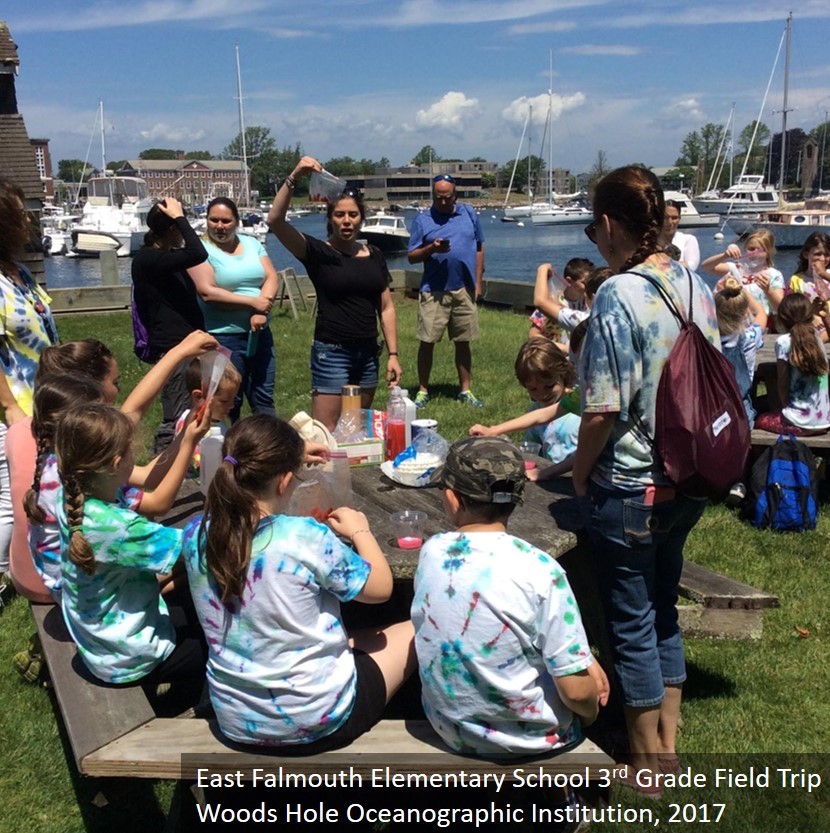
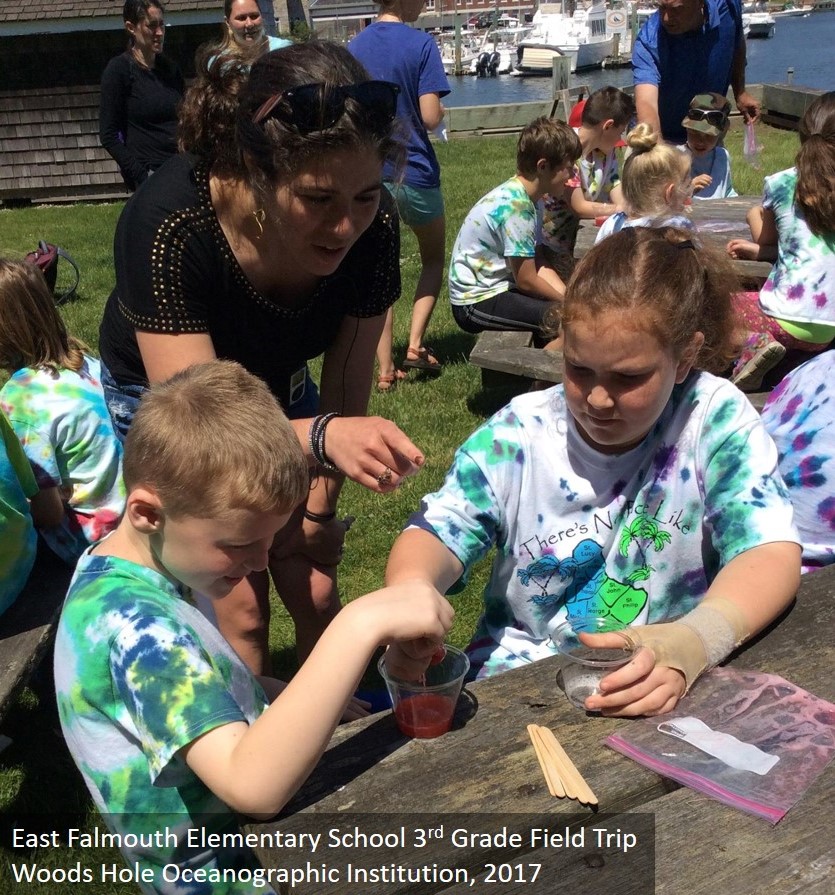
In 2017 and 2018, I hosted the 3rd grade class of the East Falmouth Elementary School for their field trip to Woods Hole. They had learned about pollution in their science class that year, so we brought those lessons to life with some hands-on activities. At that point in time, I was a research assistant for John Stegeman and Jed Goldstone working on the response of zebrafish to environmental toxins. There were 4 main components to the field trip:
(1) A tour of the zebrafish facility: where they saw juvenile and adult zebrafish, learned how we cared for the the fish, and discussed the importance of upkeep of your research organisms.
(2) A tour of our miscroscope facility: where we talked about the basics of microscope use, and they saw embryonic zebrafish in different stages of development.
(3) DNA extraction lab: this is where we connected the concept of pollution that they were familiar with to the idea that pollutants can also be invisible, just like the effect of toxins on zebrafish. We discussed what DNA is, and how studying DNA can inform us how an animal may respond to toxins in the environment. The first step in analyzing DNA is to extract it from the animal (or living thing) of interest. We therefore jumped to an activity they could all participate in: extracting DNA from strawberries!! Extracting DNA from strawberries can be done in a very safe manner, with materials you can find at home, and results in a super fun glob of DNA that resembles snot… perfect for 3rd graders!
(4) Pollution Clean-up at the Beach: we wrapped the day up with a trip to the beach across the street, where we enjoyed the sand and all cleaned up visible pieces of garbage.
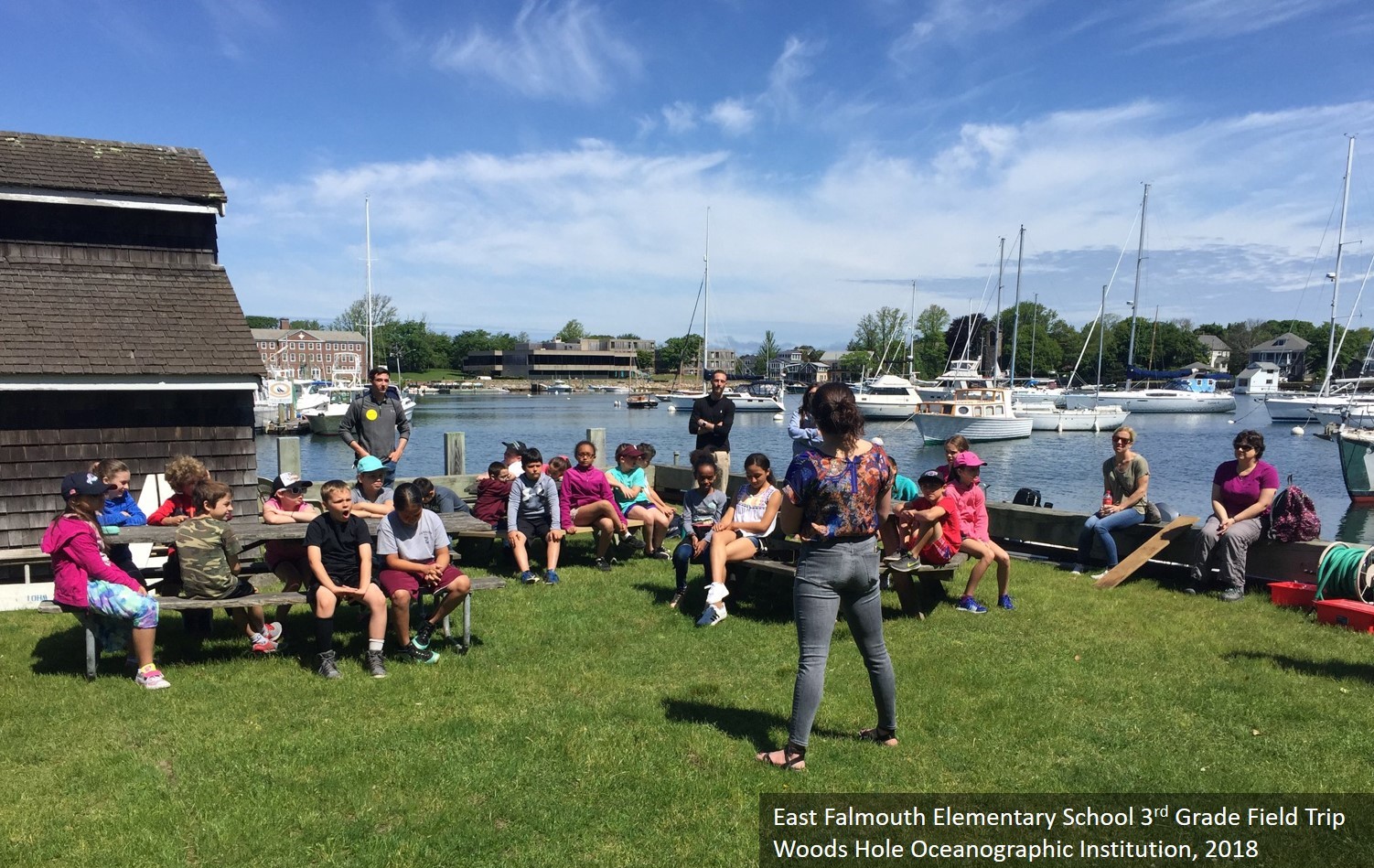

Woods Hole Science Stroll
For two years, I volunteered at the Woods Hole Science Stroll. This is a one day event where organizations, institutions, and research laboratories in Woods Hole host a fair with touch tanks, educational booths, scientific crafts, and tours of the vessels currently at the dock. In 2017, I participated as a part of the environmental toxicology lab group. We hosted a booth about zebrafish, teaching the public about the scientific uses of this model organism, and had live organsims so they could learn the differences between males and females, AB lines versus TL lines, and what a zebrafish may look like at different life stages. In 2018, I spent the day giving tours of WHOI’s vessel Atlantis, describing what a day in the life of a scientist on a research cruise is like, what needs to be considered when preparing for a research cruise, and the important features of each lab space.
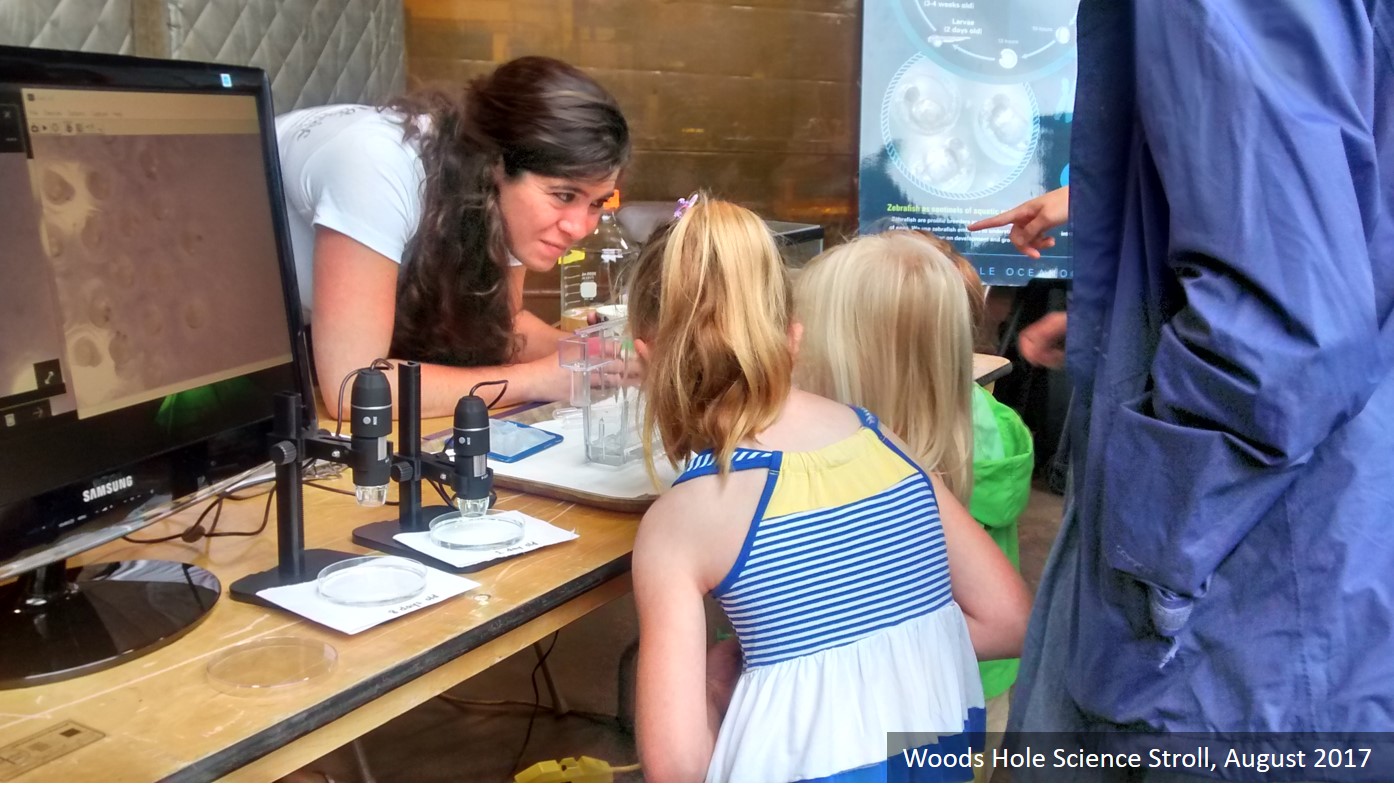
Hawai‘i Institute of Marine Biology: Research Experiences in Marine Science
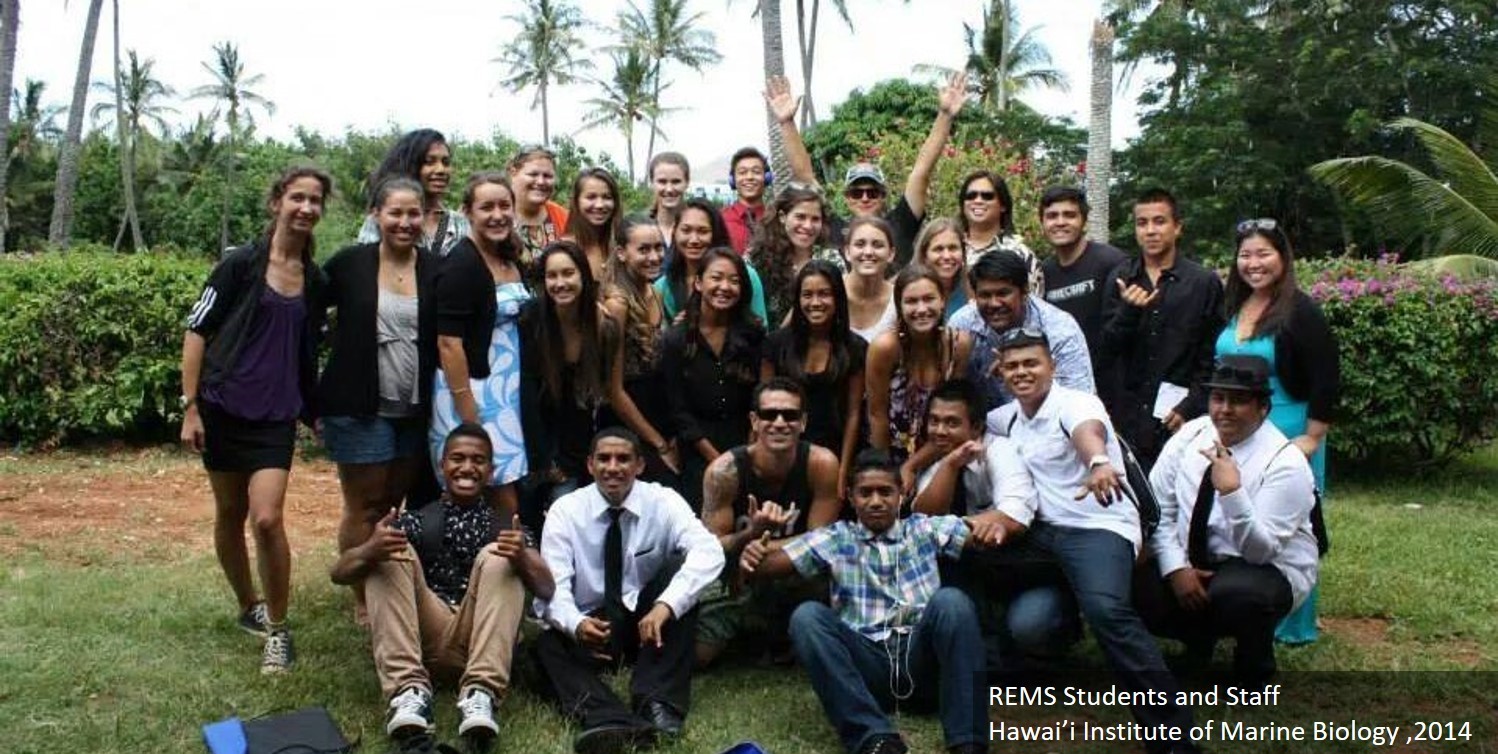
In 2014, I spent the summer as a teaching assistant for Research Experiences in Marine Science (REMS) program, hosted at Hawai‘i Institute of Marine Biology. This program is a 5 week intensive for high school students attending Hawai‘i Public Title I schools with native Hawaiian, Filipino, and other Pacific Islander backgrounds with the goal to increase interest in marine science fields. For the first two weeks, lessons were focused on marine conservation, sustainability, and scientific methods, with the aim of applying this to tropical systems. In the last three weeks, the students worked on group research projects, generating their own questions, designing and carrying out their experiments, and synthesizing a scientific report. At the end of the course, they presented their work to an audience of previous guest lecturers, family members, funders, and Hawai‘i state senators. Projects included investigating the effects of sunlight on the zooxanthellae of upside-down jellyfish, the regeneration of snapping shrimp claws, and the diversity of corals along the reefs of Kāne‘ohe Bay.
Wellfleet Bay Wildlife Sanctuary Natural History Day Camp
From 2011 through 2013, I was a day camp instructor at Massachusetts Audubon Society’s Wellfleet Bay Wildlife Sanctuary’s Natural History Day Camp. I taught campers from ages 4 through 14 about the natural history of Cape Cod and environmental stewardship through science labs, hands-on activities, games, and arts and crafts projects. Each week of camp had a different theme, such as “Dig it!”, “Metamorphosis Madness!”, or “Crazy Critters!”. Examples of activities include squid dissections, metamorphosis kickball, owl pellet dissections, designing birdfeeders, and lessons on animal adaptations, such as how seals stay warm in cold waters and why some birds have different shaped bills than others. All lessons were paired with outdoor walks and exploration at one of the five ecosystems located on the sanctuary - the swamp, the pond, the forest, the marsh, or the tidal flats. During this time, I was also the Naturalist-In-Training coordinator, organizing our high school volunteers, pairing them with classrooms for the week, and offering trainings to improve on their educational skills.
Alongside day camp, I also led public program tours, including “The Big Seine” and “Seashore Ramble”. These were 2-3 hour programs offered for families visiting the sanctuary, which included a guided walk through the sanctuary’s ecosystems and time to explore the tidal flats with dip and seine nets.
